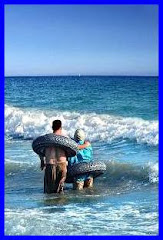In its report on a February 2000 assessment mission to Egypt, the UN Mine Action Service (UNMAS) noted that: "minefield marking procedures are limited in terms of warning signs and fencing, particularly in the Western Desert. Safe paths and cleared or suspected areas were not marked effectively in the areas observed. According to information provided by the Egyptian Army in April 2000, there have been 8,313 landmine victims in Egypt, mostly civilians.
Mine Victims Injuries Fatalities Total:
Military 3018 278 3296
Civilian 4599 418 5017
Total: 7617 696 8313
Many incidents are likely to go unreported, especially amongst nomadic Bedouin tribes in the Western desert, as well as in the areas where mines have been deployed to protect against drug cultivation and smuggling.
- According to a survey conducted by the Cairo-based Landmines Struggle Center (LSC), thirty-three were victims of UXO in 1998, and in 1999 thirty-seven. In 1998, thirteen people were killed and twenty wounded, including eight of them children killed and nine wounded. Sixteen people had accidents in the Eastern area, nine in the Western area, five in El-Beheira, and three in Aswan – (so, Dr. El-Hakim was right!). Also, two military de-miners were wounded during de-mining operations in the new port of Ein El-Sokhna in the Eastern region.
- According to the Egyptian Army in February of 1999, landmines have claimed 8,313 casualties in Egypt, as noted above, of which 696 were killed. An undated publication by the Ministry of Defense gave a total figure of 8,301 mine victims. Of that number it reported that military casualties numbered 3,284, including 272 killed, and the civilian total was estimated to be around 5,017 out of which 418 were killed and 4599 injured. Thankfully, landmine casualties are cared for by the government, which provides first aid, medical treatment and artificial limbs. Also, some compensation is granted for families of military mine victims. Additionally, one medical center has started to examine the psychological needs of landmine survivors.
Mine Awareness
According to UNMAS, "Mine awareness education is undertaken by the military for its Army mine clearance personnel, but appears extremely limited for the civilian population both in mine affected areas and elsewhere." However, there does not appear to be a government strategy to promote mine awareness, particularly in remote areas or for the minority nomadic Bedouin tribes. There is also a shortage of warning signs and fencing in known mined areas.
Mine Ban Policy
Egypt has not signed the Mine Ban Treaty but participated in the Ottawa Process as an observer. It attended the October 1996 Ottawa meeting which launched the Ottawa Process, and the Vienna, Bonn and Brussels meetings, but did not sign the Brussels Declaration.
Our reasons for not signing the ban treaty have been stated in various international forums.
Arguments include that the treaty does not take into account "the legitimate security and defense concerns of countries, particularly those with extensive territorial borders" which need landmines to protect against terrorist attacks and drug traffickers. In addition, we continue to voice concern at "a lack of financial and technical incentives" to help the country deal with its landmine problem.
Furthermore, we also express frustration that responsibility for clearance is not assigned in the treaty to those who lay the mines. Egyptian representatives have called this a "moral" issue. Millions of mines were laid in Egypt by German, Italian and British forces during World War II.
Mines have also been used in the east in 1948, 1956, 1967 and 1973 by Egyptian and Israeli forces. It must be noted, however, that when Egypt voices its concern about the mines of the "Western Desert," it generally neglects to mention that, according to its own estimates, many millions of mines are also found in the "Eastern Desert," laid by Egyptian and Israeli forces in their various conflicts.
Problems
As it is known, Egypt is one of the most mine-affected countries in the world. An estimated 22.7 million landmines lie buried beneath Egypt's soil - a figure that calculates to approximately one mine for every 3 citizens. A Ministry of Defense publication notes that 288,000 hectares of Egyptian territory are contaminated. Areas near the Egypt/Libya border, along the Red Sea coast of the Eastern Desert and areas of the Sinai Peninsula are also mined from the 1948, 1956, 1967 and 1973 conflicts. (Israel withdrew from the Sinai Peninsula in 1982.)
International Funding for Mine Clearance
Egypt has been seeking international financial support to clear its mines. According to the Vice-Minister of Foreign Affairs and Disarmament, despite asking the international community many times for help, "no serious effort has been made to help us, except perhaps from a very small number of countries which one can count on the fingers of one hand.” Egypt seeks US$200 million in funding for mine clearance. The United Nations reports that Egypt has requested that Western countries responsible for the El Alamein battle contribute US$142 million for mine clearance and the government would pay an additional US$50 million.
Germany has provided Egypt's mine clearance efforts with metal detectors and protective clothing while the United Kingdom has given $145,189 in mine clearance funding and equipment. The United States Humanitarian De-mining Program has allocated $1.5 million. Italy has provided de-mining training.
The Egyptian Army has been involved in de-mining efforts since the end of World War Two. Egypt has four military national de-mining battalions of 480 troops; "millions of dollars each year" are budgeted for mine clearance. To date, supposedly 120,000 hectares of land have been cleared, removing a total of 12 million landmines.
But, one main problem still remains, and that is the lack of information on the locations of mined areas, indicating a need for a more comprehensive survey. Also, rain, wind and shifting sands have moved the mines from their original locations or caused them to sink deeper than one meter into the earth. Additionally, is the problem old antitank mines planted during World War Two have become increasingly sensitive as they degraded over the decades, making them prone to function like an anti-personnel mine.
Role of the Armed Forces in De-mining
The most remarkable national effort recently exerted by Egypt in the process of de-mining is the role of the Armed Forces from 1973 to 1995. They cleared a vast area of lands reaching to 103,000 hectares; mostly in the Eastern Desert and Sinai. They removed about 11 million mines bringing down the number of planted land mines in Egypt from 34 million to 23 million mines. Mined areas fell to 288,000 hectares from 401,000 hectares. In a later phase, from 1995 up till now, the Armed Forces removed about 1.2 million mines. Thus the number of mines in Egypt fell from 23 million to 21.8 million mines and mined areas from 288,000 hectares to 284,000 hectares.
Government Responsibility & NGOs
On 3 April 2000 Egyptian Prime Minister Atef Ebeid issued Decree # 750/2000 to form a national committee for mine clearance. Membership in this committee includes fourteen ministries and three regional governorates and three NGOs. Strangely, two of these NGOs had not existed prior to this decree and the third does not presently work in the mine action area. (Could it be Hessein Fahmy’s NGO?!)
The Minister of Planning and International Cooperation heads the committee. More peculiar, four mine-affected cities or governorates were not included in the committee, namely Port Said, Ismailia, Suez, the Red Sea. It is also baffling that the only NGO engaged in mine action in Egypt (Landmines Struggle Center) were not included in the committee.
International Responsibility
The international communities should have a major role in Egypt’s mines, especially in finance and technical aid. The mines of the Western Desert were planted totally during World War II and for which Egypt was not at all responsible, and the countries that planted these mines in Egypt should shoulder the responsibility and contribute to the cost for clearing these mines.
In spite of the Egyptian diplomatic efforts in this respect, the international response has been inadequate and is below expectations. Germany refused to cooperate with Egypt for fear that such a commitment on its part will encourage other countries to establish a similar claim. Italy, an Axis power during the war, limited its assistance to training Egyptians in mine removal.
The UN, on the other hand, has acknowledged the statistics presented by Egypt concerning the number of mines on its territory but has not considered the problem as urgent. Thus, the question posed now is how can the international role be activated? The most immediate task is to confirm the responsibility of the involved countries to clear these mines. Stronger attempts should be made to convince these countries to accept their responsibility under international law.
The Ottawa Convention
The problem is that potential donors - including Britain and Germany - are reluctant to fund large-scale clearance on the grounds that Egypt hasn't signed the Ottawa Treaty, banning the use of anti-personnel mines. Our principal objection is the missing clause in the Treaty, which stipulates that other countries that laid landmines on other people's territory should be responsible for removing them.
Problems with Current Solutions
For an Army, which has developed minefield breeching methods, the prospect of de-mining thousands of square kilometers of wind-blown desert and salt marsh is a huge challenge. The major problem in achieving a satisfactory level of clearance, is the cost required, which is too great.
Appeals to Britain and Italy have yielded little assistance so far. Germany has been more generous: in 1998 the German government provided about 100 modern detectors (Föster 4400) and is currently offering to try the 'Mine Breaker' machine in the Western Desert. The US government has contributed US$500,000 in 1999 for some equipment such as mine rollers, and training.
Furthermore, the Army engineers see most minefield problems in terms of detection. They need better ways to detect and locate mines and UXO in deep sand and mud. Accidents are also a problem, and sometimes occur while using metal detectors.
This is really mind boggling, or should I say, mine bungling?! Now, what is the Government really going to do about it? It shouldn’t put its head in the sand any longer, like an ostrich, lest it finds itself blown up.
H.N.
* (alphabetically) Courtesy of:
- Duncan Green, CAFOD Policy Papers, the Ottawa Treaty, U.K.
- Egyptian State Information Service, Egypt
- Klaus Daerr, Sahara Overland, Germany
- James Trevelyan, University of W. Australia, Australia
- Landmine Monitor, International
- Landmine Watch, International
- New Internationalist magazine, USA
- Sahara El-Kebira, Italy




























































































































